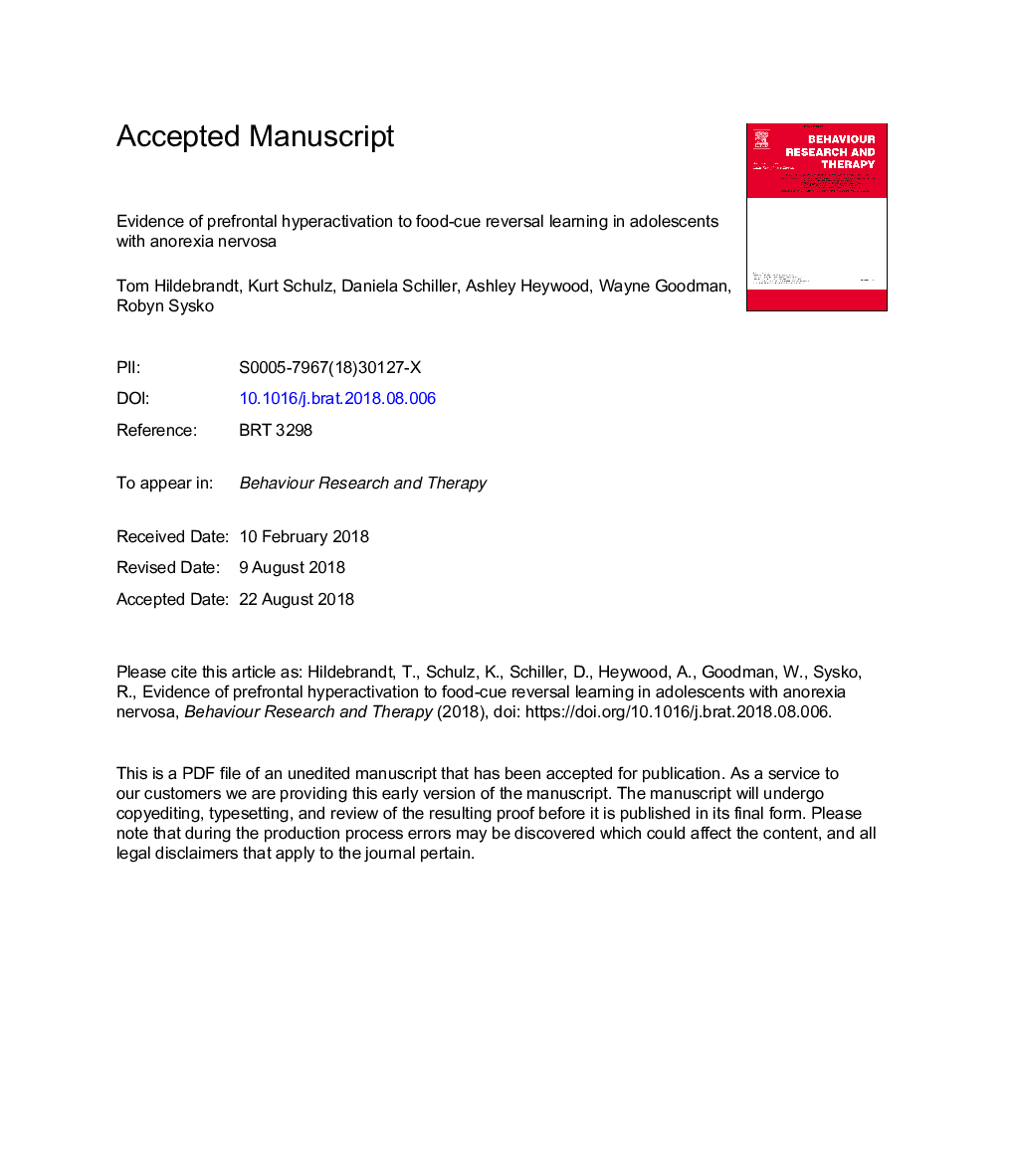| Article ID | Journal | Published Year | Pages | File Type |
|---|---|---|---|---|
| 11023465 | Behaviour Research and Therapy | 2018 | 36 Pages |
Abstract
Food avoidance in anorexia nervosa (AN) has been hypothesized to occur as a result of deficits in reversal learning and altered neuronal processing of food-cue relationships. Extant findings suggest that those with AN may rely on heightened recruitment of prefrontal regions during initial formation of food-cue learning and difficulty extinguishing these relationships may result from elevated insula activity. We tested this hypothesis by comparing behavioral and neuronal responses to food-cue acquisition and reversal between adolescents with AN and healthy controls. Compared to controls, acquisition of a food-cue association and its reversal were associated with elevated prefrontal activation in adolescents with AN. There were no significant differences between groups in insula activation and no behavioral differences in the ability to acquire or reverse the food-cue association. The results suggest that adolescents with AN recruit prefrontal regulatory networks to acquire and alter expectancies to food. This pattern of top-down prefrontal control suggests that clinical interventions that target changes in food-cue relationships and rely on cognitive control may be less effective. Interventions that alter behavior without reliance on this top-down control may have advantages with this population.
Related Topics
Health Sciences
Medicine and Dentistry
Psychiatry and Mental Health
Authors
Tom Hildebrandt, Kurt Schulz, Daniela Schiller, Ashley Heywood, Wayne Goodman, Robyn Sysko,
